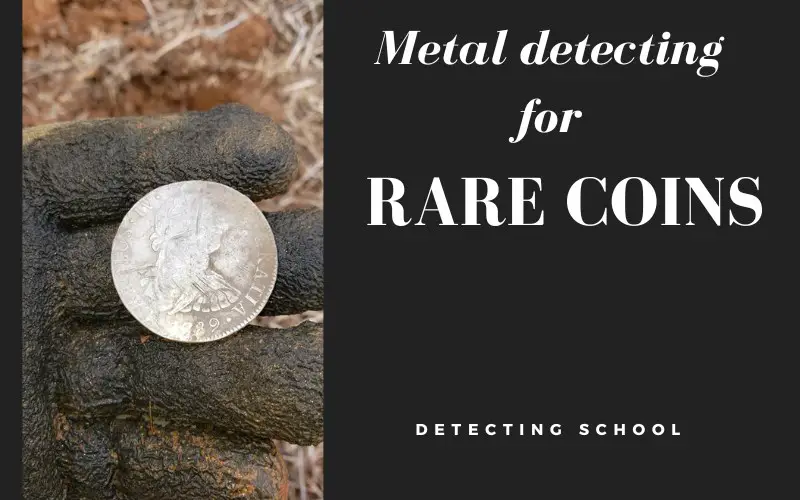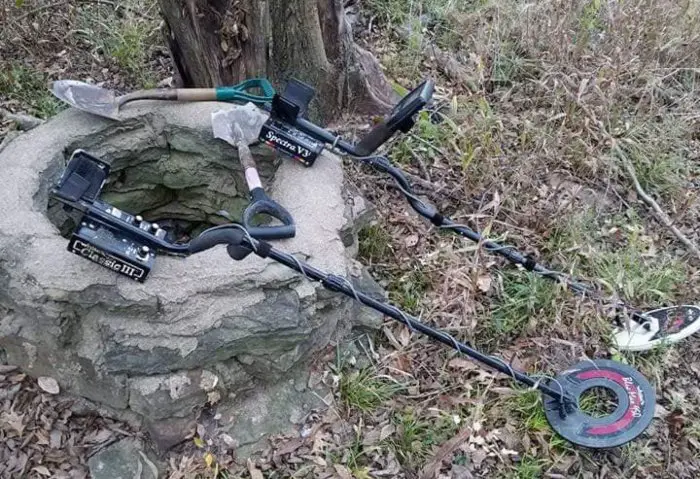
Rare coins are, in most cases, a tangible piece of history. Coins tell stories of past civilizations, economies, and eras …
Today, I will guide you through the intricate details of pinpointing these valuable treasures.
It doesn’t matter whether you’re a seasoned detectorist or just starting out, this information will serve you and help you in your journey.
Key Takeaways
- Historic maps, local archives and clubs can give you ideas on optimized selection of locations for rare coin.
- Locations like old wells and abandoned footpaths can be goldmines for rare coins.
- To properly value rare coins, you need to do some historical research and even get an expert consultation in some cases.
Why metal detecting for rare coins is just Amazing?
I don’t know if you’ve experienced this feeling before, but once you unearth old rare coins, this will automatically connect you with the past …
It is almost a window from where you can intimately see and discover artifacts that provide insights into ancient cultures and significant historical events.
Each discovery is almost like solving a puzzle … Each piece will link you to a particular era or narrative.
Moreover, finding those rare coins is not as easy, that’s why you need to double down onto your efforts, which is (at the end of day) a great encouragement to have more physical activities and explore varied terrains, often in picturesque settings.
Metal Detector Recommendation for Rare Coins …
The Garrett Ace Apex (Check it Here at Amazon) is an invaluable tool to detect all sorts of coins, especially rare coins … Because it has a better precision compared to most of its competitors.
It is a multi-frequency machine that can help set specific target awareness like bronze, silver or gold (these are common metals in rare coins).
This precision will also give you the ability to differentiate valuable coins from other metal debris.
It also operates quite well in mineralized soils, often the resting places of ancient coins.
Best Locations to find rare coins
Common Locations:

- Old Parks: Old parks (especially those established in the 19th or early 20th century) have seen a ton of visitors over the years. Chances are these places still hold many dropped coins that have been buried over time.
- Historic Town Centers: Areas that have been a hub of activity for many centuries can also hold coins in various eras. This provides a snapshot into the region’s economic past.
- Beaches: Beaches frequently yield lost valuables (also rare coins) especially after storms or in areas where old settlements once stood.
Obscure Locations:

- Old Wells: Keep in mind that traditionally, wells served not only as water sources but also as wishing wells. If you stumble upon the right well, then you can have almost a gold mine of rare coins.
- Abandoned Footpaths: Try to find forgotten footpaths (those connecting old settlements) leading to historical sites … These are often overlooked, yet they might house lost treasures.
- Former Fairgrounds: Old fairs or circuses that are no longer in operation are a great & untapped location that you should target.
Try to construct a shortlist of possible locations near you based on the ideas and suggestions I’ve provided above. Then try to do some of the research tips I share below …
How to research rare coin’s locations?
There are many ways that can help you do your due diligence about possible locations for rare coins:
- Historical Maps: Consulting old maps of your region is a great place to start. You might be surprised that this can reveal long-forgotten settlements, trade routes or areas of historical significance (Check this complete guide on how to find and use old map for metal detecting)
- Local Archives: Local libraries is generally my go-to. There, you can find old documents, newspapers and records that can give you solid indications of past events or places of congregation.
- Digital Resources: Websites like Historic Aerials is a great resource for aerial photos. It will help you to identify areas unchanged over time. Keep in mind that Google Earth’s timeline feature can also give you pretty accurate landscape changes.
- Speak to Locals: This is something you shouldn’t take for granted. Indeed, elderly residents can provide some sort of evidence of historic sites, old parks and many other gathering places.
- Join Metal Detecting Clubs: To be honest I think I have to write a full article about metal detecting clubs (I haven’t got the time to do so) … They can offer unmatchable insights about untapped places that you couldn’t find otherwise.
- Land Ownership Records: these will give you an idea on private properties and their historical value. Always seek permission from landowners.
Obscure techniques to maximize coin finds …
Finding rare coins is not easy, that’s why you need to establish some search techniques that are totally different from what most people do. Below some ideas …
- Pulse Induction in Mineralized Soils: I know this option is not available for most people because PI machines aren’t cheap. Yet, it is still worth mentioning that using pulse induction detectors can significantly enhance your detection capabilities in areas with high mineral content.
- Cross-Gridding: Instead of sweeping randomly, using perpendicular patterns is much better than sweeping in a random way. This will give you an edge to cover more space.
- Spiral Search: If you find a coin, try to search in spirals outward from the initial find … By doing so you will maximize your chances of locating coin spills.
- Night Detecting: At night when ground temperatures get cooler, this can significantly increase its conductivity, thus improving detection depth range.
- Smaller Coils: If you are dealing with junky environment, then you can use smaller coils, as it offers better target separation. This is tremendously useful aiding for isolating valuable finds.
These techniques might seem easy, yet, mastering them require a lot of practice and patience … However, if you do so, you’ll be surprised by the results!
How to recognize and properly assessing coin value?
Coins value is directly correlated with their rarity. You can check that by depicting short-reigned rulers or limited mintings as they often have higher values.
Coin’s condition is also a crucial part … inscriptions and images (if any) should be legible, also there should be little to no corrosion!
Coins marking notable historical events or eras can fetch higher prices.
You also need to be able to verify the coin authenticity. You can do so by researching hallmarks, strike patterns and known forgeries.
Important Ethical Considerations …
Metal detecting for rare coins comes with a number of ethical responsibilities …
- You should always respect landowner rights and boundaries.
- Disturbing historical sites is off limit.
- It’s crucial to report any significant find to local authorities or archaeological bodies. This is even more valid if you are dealing with finds with historical importance.
- Avoid over-cleaning or altering coins. This can diminish their historical and monetary value.
- Being transparent about a coin’s origin is also important in my opinion.
Final Thoughts …
Rare coins are really capable of transporting us through time. With every rare coin, you’re not just finding metal, but a piece of history.
Now, with the tools and tips I’ve shared with you in short post, do you feel ready to venture out and become a part of the legacy of rare coin hunting?
